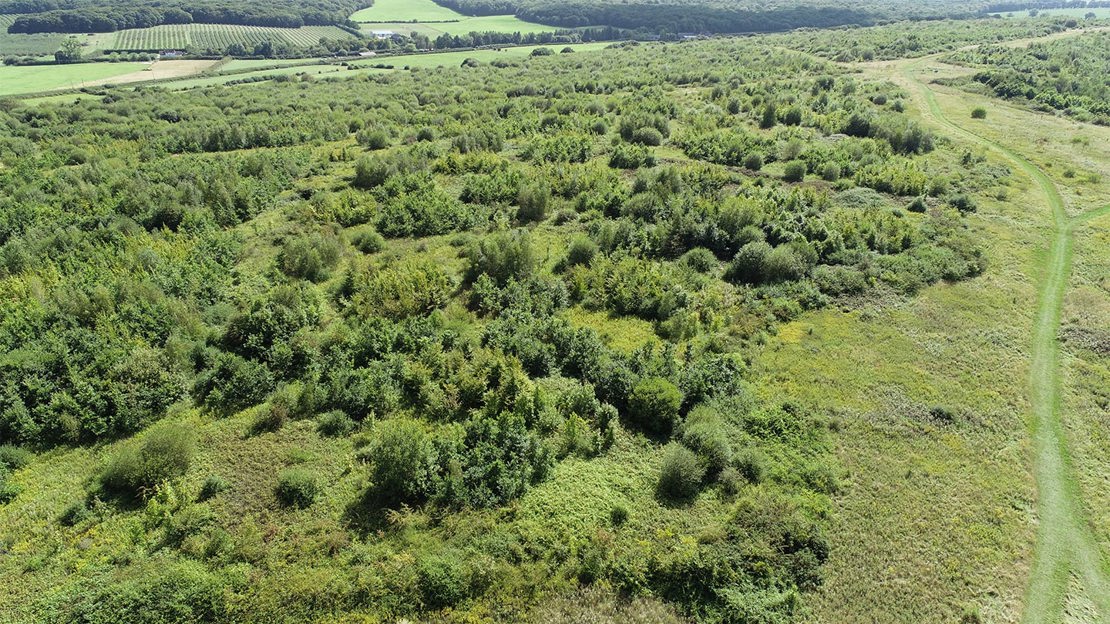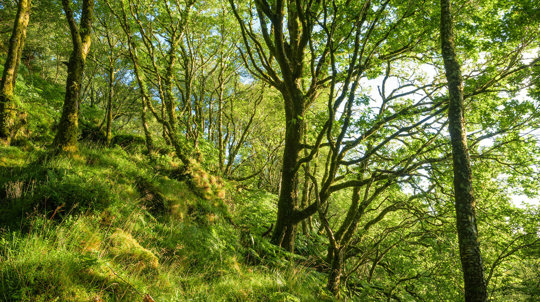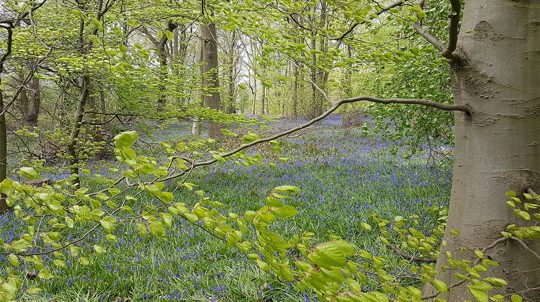TreE PlaNat Project
Exploring land managers' views on different woodland creation methods and their impacts.

Woodland creation is a widely accepted strategy for tackling the nature and climate emergencies. Until now, tree planting has been the most common method for woodland creation in the UK. While it has many benefits, its outcomes are often overestimated.
There is increasing interest in using natural processes (when trees reproduce naturally) for woodland creation. However, it's been difficult to recommend which woodland creation method works best due to differing views of natural processes, varying success and limited evidence. Despite this, natural processes could have huge potential for creating woodlands on a large scale across the UK.
In 2022, we partnered with the University of Stirling, Forest Research, University of Edinburgh, Royal Holloway University London and the National Forest in an interdisciplinary project funded by the UKRI Treescapes programme. The results of this project have improved our understanding of:
- the ecological outcomes of different woodland creation methods
- how best to engage people with different creation methods
- the likely trade-offs (i.e. carbon sequestration) associated with each method.
The aims of TreE PlaNat
The main goal of TreE PlaNat (Treescape expansion through planting and natural colonisation) was to explore land managers' perceptions and the socio-ecological impacts of different woodland creation methods, including planting, natural processes and a hybrid of both methods.
The evidence on the success of natural colonisation is limited and possibly biased due to reporting of only positive outcomes. TreE PlaNat aimed to fill these knowledge gaps by expanding the ecological evidence base, understanding landowner perceptions of woodland creation methods and working with land managers and advisers to improve their knowledge gaps.
An interdisciplinary and collaborative project
Engaging land managers and advisers
The social science team conducted interviews and surveys of over 570 land managers across the UK, gathering their views on different woodland creation methods and trade-offs between them. Researchers at the University of Edinburgh facilitated a Knowledge User Board of around 20 land managers, advisers and professionals who provided feedback on research directions and findings.
Conducting ecological surveys
Ecological surveys of 28 woodland creation sites took place in summer 2023. Researchers selected relatively young woodlands, ranging from 13–43 years, on previously improved grassland or arable land. The woodlands were created through planting, natural processes or a hybrid approach.
At each site, researchers:
- measured trees and habitat structure
- recorded the presence of species groups such as moths, birds and bats
- used plasticine caterpillars to attract birds and small mammals and recorded vegetation damage from insects and herbivores to understand predation pressure.
Lasering trees to survey sites
Researchers flew drones with LiDAR (Light Detection and Ranging) sensors to survey each site. This technology uses laser beams to measure distances producing detailed ‘point clouds’ which can be used to calculate habitat structure.
Key research takeaways
Social
Language matters and hybrid methods are valued.
Language plays a crucial role in how woodland creation methods are perceived. Generally, the term ‘natural regeneration’ was the most accepted with positive connotations.
Key findings
- 72% of land managers valued all woodland creation methods.
- 16% preferred hybrid approaches.
- 9% preferred only planting.
- 3% preferred only natural colonisation.
Land managers also showed clear preferences for creation methods when considering specific objectives.
- Natural processes: preferred for biodiversity and wellbeing objectives.
- Hybrid methods: preferred for carbon sequestration and succession planting.
- Planting: preferred for timber production and diversification of income.
Ecological
Hybrid sites benefit biodiversity for some groups of species.
Ecological surveys recorded 25 tree species across all sites. The variety of tree species was similar across woodland creation methods, though the dominance of certain species varied. For example, willow and hawthorn were particularly dominant in sites created through natural processes.
Key findings
- Hybrid sites had the highest number of ground flora and moth species.
- Planted sites had the tallest trees that were fairly uniform in structure. They also had a higher proportion of leaf damage compared to hybrid sites.
- Creation method had no influence on the biodiversity of birds and mammals.
- Overall, there were unusually low levels of herbivore damage at the sites with no significant difference between creation methods.
Socio-ecological
Working with advisers to champion natural processes.
The project sparked interest from various land managers and aimed to support them in using natural processes to create woodlands. The Knowledge User Board highlighted the importance of using case studies to guide land managers, which led to the creation of a collection of case studies and a blog.
The project also created a demonstration site hosted by the National Forest, consisting of low-density planting as a hybrid approach and pure natural colonisation. A demonstration event and workshop session were held here, and shortly after an FAQ document on natural processes for land managers was created.
In August 2024, we hosted a training event to share research findings. Two more events are planned for 2025 in collaboration with Natural England. Contact conservationtraining@woodlandtrust.org.uk for more info.
Contributors
Principal Investigator: Dr. Elisa Fuentes-Montemayor (University of Stirling).
Social Science: Dr. Bianca Ambrose-Oji, Dr. Maddy Pearson and Rachel Orchard (Forest Research).
Ecology: Prof. Kirsty Park, Dr. Laura Braunholtz and Dr. Thiago Silva (University of Stirling), Prof. Julia Koricheva (Royal Holloway University London), Dr. Matt Guy and Dr. Sam Hughes (Forest Research), Prof. Kevin Watts (Forest Research and University of Stirling).
Knowledge Exchange and Synthesis: Prof. Marc Metzger and Dr. Susannah Fleiss (University of Edinburgh).
Project Partners: Dr. Vanessa Burton (Woodland Trust), Dr. Heather Gilbert (National Forest Company).






